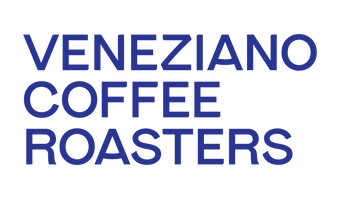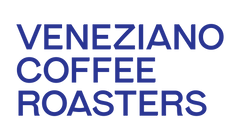By Aryan Aqajani, Veneziano Coffee Roaster
What I like about specialty coffee is the opportunity to discover and taste amazing coffees from some of the most remote places in the world. Just last month, Veneziano Coffee Roasters were the first Australian roasting company to step foot into two remote regions within Peru and I am ecstatic that I got to be a part of that journey. I would have never imagined that one day I would have the chance to visit Peru and be a part of an expedition in tasting amazing coffees, meeting passionate and friendly people and discovering coffee from very remote places. This is the adventure that Patrick Connolly (Veneziano’s Production Manager) and I had when we flew to Lima, Peru on 15th of July 2017.
Peru is an incredibly unique place. Basically, the sea, jungle and mountains have shaped the country’s demographic, lifestyle and coffee production. Coffee regions in Peru, such as Cusco, Ayacucho and San Martin are producing high quality coffees, however, you can discover higher quality coffees in the Amazonian and Cajamarca region in the north where farmers are young and eager to experiment with processing and fermentation techniques.
You can find coffee varieties like Typica, Bourbon, Catuai, Caturra, Pache, and Mundo Novo in coffee farms averaging three hectares. Due to the climate, the majority of the country’s coffee is washed. It seemed that every small farm had its very own, unique microclimate. Most coffees in these regions are Certified Organic, in fact, Peru is the largest exporter of Fairtrade Organic coffee in the world.
At our first stop in Lima, we visited the Sustainable Harvest head office. We met with the team including Oscar Gonzales, the Sustainable Harvest’s Quality Specialist and Supply Manager in Peru. This gave us the opportunity to discuss production issues and the supply chain in Peru. It seems the most common problem is the lack of dry mills in the more remote regions. Some of the current mills are owned privately, and others by cooperatives in major regions which makes it quite hard for smallholder farmers to get adequate support. Another issue is the current shift in weather patterns, especially on the edge of the Amazon basin which has now shortened the harvest season, causing further damage to cup quality and the farmer’s income.
We left Lima and took a small plane up into the Andes mountain range to a small city called Tarapoto, the gateway to the northern coffee growing region of Peru. The first stop was Moyobamba to meet and visit some passionate coffee workers at the Alto Mayo dry mill. We spent a long afternoon cupping and discussing the region and its coffee. After a grueling 10-hour drive through some of the world’s most beautiful mountains, we finally met with another supply partner, Café Monteverde in a small-town call Rodriguez de Mendoza, home to an incredible estate called Finca Timbuyacu. Alfonso, his wife and the rest of his team, gave us the chance to taste some unique coffee profiles that are quite uncommon in Peru and spend two nights at his incredible farm. We were treated by a party with local, traditional dancing and were offered the unique meal of guinea pig! An amazing two days was spent with Alfonso. Finca Timbuyacu is the leading farm in the region and by separating coffee varieties and focusing more on his processing and drying techniques, he can continue to improve the cup quality even further.
On the Friday, we packed our bags and got prepared to hit the road again. This time, we drove to Chirinos in the Cajamarca region near the border of Peru and Ecuador to an incredible estate called Finca Churupampa. It was quite an honour to discover that Veneziano is the first Australian roaster to visit and start working directly with Finca Churupampa. It took 11 hours to finally see the most progressive and unique coffee farm in the region. It was around 9:30am when we arrived at Finca Churupampa. Seeing the farm after a long drive was such a relief but when we saw the Tocto family waiting to meet us, I once again forgot about coffee and was overwhelmed by the family’s hospitality as they greeted us.
They invited us into their small kitchen and served us a hearty breakfast including chicken, trout and yucas, all farmed at Finca Churupampa. The farm is at 1800masl and has separated varieties like Caturra, Typica, Pache and Catimor. Eber Tocto who shares the farm with his brother has built raised African beds, he makes his own organic fertilizer and has built a washing station with long extended water channels. His family has been running the farm for more than six decades. He even started the first cooperative in the region in 2005 and now it is engaged with more than 160 families. Finca Churupampa is seen as the role model farm for other producers in the region.
In the afternoon, we went to the dry mill and cupped the most distinctive coffee tasted so far in Peru. In many ways, Churupampa’s mission is to shine a brighter light onto the high-quality potential of Peru and reframe how the country’s coffee profile is understood.
The next day, we flew back to Lima marking the end of the trip. I was experiencing such mixed feelings as it was quite hard for me to say goodbye to all those lovely people that I met during my trip. However, I was appreciative of my time in Peru and learnt again that the most important thing about coffee is the incredible people behind the scenes and the relationships we make.



